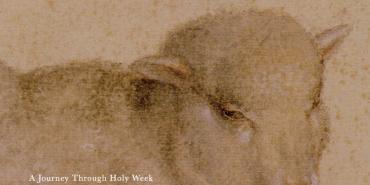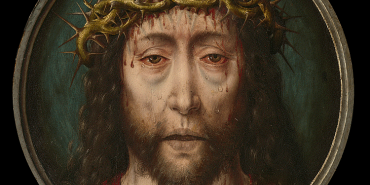Reflecting His Image

Who am I?
Each of us wrestles with this fundamental question. Society, bound by identity politics, tells us our identity is found in what we do, what we look like, who we love, what we enjoy, or what we believe. We might even convince ourselves this is true. Yet, each of these false sources of identity hinders us from fully becoming who God created us to be because each source is rooted in our fallen human nature rather than in God Himself.
We hear this identity question echoed throughout Scripture. Moses asks God, “Who am I?” (Exod. 3:11), but then the deeper question, “Who are You?” (Exod. 3:13). The Lord answers, “I am Who I Am’” (Exod. 3:13–15). King David asks, “Who am I, O Lord God?” (2 Sam. 7:18b), and the Psalmist asks, “What is mankind that You are mindful of them?” (Ps. 8:4a). Jesus asks His disciples, “Who do you say I am?” (Luke 9:18-20). And, on the Damascus road, Saul cries out, “Who are you, Lord?” (Acts 9:5a), and receives his own new identity in return.
Because “God created humankind in His image” (Gen. 1:27a), to truly know ourselves, we must first know who our Creator is. We can do that reliably only through God’s written Word, the Bible, and what it reveals about Christ Jesus, who “became flesh and made His dwelling among us. We have seen His glory, the glory of the one and only Son, who came from the Father, full of grace and truth” (John 1:14).
Too often, we begin with our own nature and our own desires, projecting these onto God as if He must be like us. We attempt to contort Him into our image rather than allowing ourselves to be transformed into His.
Both Male and Female
Interestingly, God uses sex and sexuality to tell us both how we were created and how He relates to us. In Genesis 1:27b, we’re told “male and female He created them,” and that this male and female “become one flesh” in a garden they share with God (Gen. 2:24-25). Scripture is filled with additional references to sexuality and marriage. In the heart of Scripture (Song of Songs), we find a beautiful story of passionate love—emotional, physical, relational, and spiritual—between a husband and a wife, a story celebrating “martial intimacy [which] is intended to reflect the union of Christ and the Church, a mystery of grace.”1 The first miracle of Christ was at a wedding ceremony, an act that foreshadows the importance of the mystical union of Christ and His Church (John 2:1-11). This marriage analogy will be used again throughout Christ’s ministry and by His apostles. In Revelation, we see the ultimate marriage of the Lamb of God with His bride, the Church (Rev. 21:9-11).
This bracketing of Scripture with such references suggests that sexuality within holy marriage is a primary metaphor that God uses to help us understand His past, present, and future relationship with us. When the woman exclaims, “My beloved is mine, and I am his” (Song of Songs 2:16a), she echoes our joy as the Church; our Beloved is ours, and we are His.
Given that our created sexual nature serves as a splendid, powerful representation of our relationship with God Himself, it shouldn’t be surprising that the enemy of our souls would attack this symbol. The spiritual disease of original sin, which taints us all, fundamentally corrupts our understanding of the self. It deceives us, distorts our desires, and seduces us toward all sorts of unsanctified sexual behaviors. Many have struggled with identity issues and sexual proclivities which, without divine boundaries, would destroy us.
“… the fracturing of human desire in the Fall, resulting in behaviors that elevate self-sovereignty, damage and objectify the other, and darken the path of human desire.” Manual, ¶31.
Let us be clear about this. Who we are is determined by God and it is neither bad nor mistaken; both male and female were created in the image of God. These distinguishers, ordained by God, are an essential part of how we come to know Him and His creation. Sexuality is neither fundamentally impure nor degenerate; sexuality helps us to understand how God loves us. The real problem is sin. Sin makes it impossible for us to see clearly. Martin Luther explained:
Our nature, by the corruption of the first sin being so deeply curved in on itself (incurvatus in se) that it not only bends the best gifts of God towards itself and enjoys them, as is plain in the works-righteous and hypocrites, or rather even uses God Himself in order to attain these gifts, but it also fails to realize that it so wickedly, curvedly, and viciously seeks all things, even God, for its own sake.2
“As fallen beings, we have experienced this evil on every level—personal and corporate. The principalities and powers of a fallen world have saturated us with lies about our sexuality. Our desires have been twisted by sin and we are turned inward on ourselves.” Manual, ¶31.
Our sin results in brokenness and fractures the image of God in us. In our fallen state, we justify forms of self-understanding, identity, and sexuality which are at odds with God’s perfect design. In our sinful state, we trust our personal feelings, thoughts, and experiences over the authoritative Word of God and so do damage to the image of God within us. God’s Word is the supreme authority for living a victorious, whole, and holy life. The presence of sin obscures our understanding of God, His holiness, and His hatred of sin. In our pride and fear, we glorify our darkened understandings of sex and sexuality. Gradually, these obsessive false conceptions of self could become idols to the extent of deceiving us into believing that the Lord approves of it all.
“Who may ascend the mountain of the Lord? Who may stand in his holy place? The one who has clean hands and a pure heart, who does not trust in an idol or swear by a false god (Ps. 24:3-4).” Ultimately, sin separates us from God.
Our Living Hope: God’s Holy Love
We cannot make ourselves walk in holiness except through the blood of Jesus alone. Christ, our living hope, came into the world, lived a life of complete obedience and love as the second Adam, and sacrificed His sinless life to gain our reconciliation with the Father. It is only through the work of the Holy Spirit that we are brought into union with Christ. There we are made new, we become holy, and we find our identity in God, even as the incarnate Son did in His humanity.3 “Therefore, if anyone is in Christ, the new creation has come: The old has gone, the new is here!” (2 Cor. 5:17).
What does it mean to be in Christ? It means to surrender everything—our desires, our needs, our hopes, our presuppositions—in full submission to Him. “For you have died, and your life is hidden with Christ in God” (Col. 3:3). It means remaining in Him, and He in us (John 15:1-4). It means loving and obeying Him (John 15:9-17; 1 John 5:2-4). It means finding our identity solely in our relationship with Christ. “…In Christ Jesus you are all children of God through faith, for all of you who were baptized into Christ have clothed yourselves with Christ. There is neither Jew nor Gentile, neither slave nor free, nor is there male and female, for you are all one in Christ Jesus” (Gal. 3:26-27).
“We affirm belief in a God whose creation is an act of love. Having experienced God as holy love, we understand the Trinity to be a unity of love among Father, Son, and Holy Spirit. Therefore, we are made with a yearning for connection with others at the core of our being. That yearning is ultimately fulfilled as we live in covenanted relationship with God, the creation, and loving one’s neighbor as one’s self.”—Manual, ¶31.
The call to holiness cannot be separated from the profound love and grace of God; God is holy love and calls us, His children, to the same. All of us will find ourselves searching for identity outside of Christ at different points in our lives. But with humility, we must always trust “…that He is ever present and efficiently active in and with the Church of Christ, convincing the world of sin, regenerating those who repent and believe, sanctifying believers, and guiding into all truth as it is in Jesus.”4
Janet B. Dean is a licensed psychologist and associate professor of psychology at Asbury University in Wilmore, Kentucky, USA. She holds a District Ministerial License in the Kentucky District of the Church of the Nazarene. She and her husband, Rev. Kevin Dean, have two adult sons.
1. Church of the Nazarene Manual 2017-2021, ¶31.
2. Martin Luther, Lectures on Romans, L515-516, quoted in Mark Johnston, Saving God: Religion After Idolatry (Princeton: Princeton University Press, 2009), 88.
3. Chris Bounds, personal communication, August 28, 2019.
4. Church of the Nazarene Manual 2017-2021, Article of Faith 3.
Holiness Today, November/December 2019
Please note: This article was originally published in 2019. All facts, figures, and titles were accurate to the best of our knowledge at that time but may have since changed.




